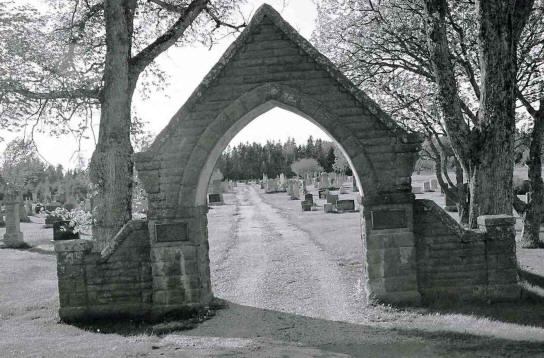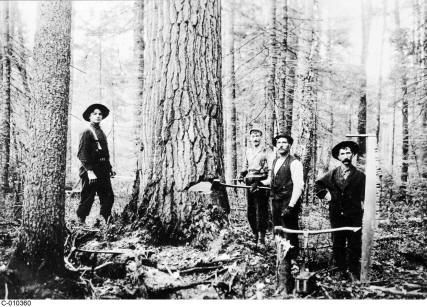THE ENGLISH IN NEW BRUNSWICK

Photograph of a Memorial Stone Archway at Pointe de Bute cemetery. It is dedicated to the area's many Yorkshire settlers who arrived in the mid 1770's.
Many Yorkshire immigrants came to New Brunswick between 1772 and 1775, settling in what would become Westmorland and Albert counties. They attracted later followers from Yorkshire but only for a brief period. After the mid 1820s when Upper Canada (Ontario) became more accessible, its better climate, soil fertility and job opportunities made it the most popular of immigrant destinations.
New Brunswick acquired numerous Loyalists from 1784, many of whom claimed English ancestry. They mainly settled in the southern half of the province – especially in the St. John River valley and in Charlotte County.
The timber trade drove New Brunswick's economic development. It built the towns of Saint John, Chatham, St. Andrews and Fredericton, created employment for countless men and encouraged the investment of capital in the province.

The English domination of New Brunswick was short-lived. By 1851 the Irish-born accounted for a staggering 71 % of New Brunswick’s total population, with the Scottish-born representing 12 % and the English-born 10 %. Despite this, the 1871 Census, the first to record their number along with immigrants directly from England, recorded that the English represented 29 % of the population - only six percentage points behind the Irish. The majority of people with English ancestry were to be found in the southern counties of the province.
For further details see chapter five in Planters, Paupers and Pioneers, Lucille's book about Atlantic Canada.

